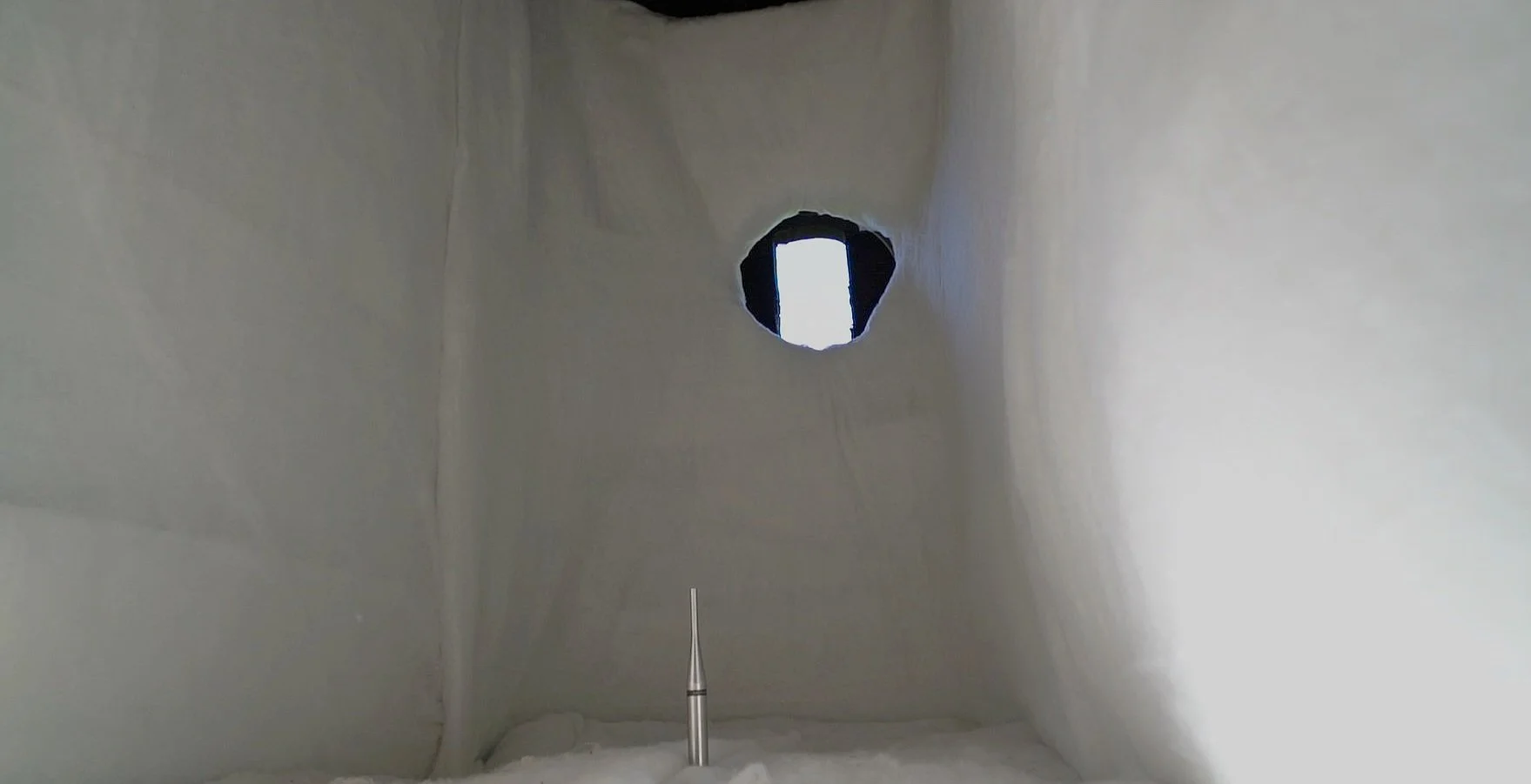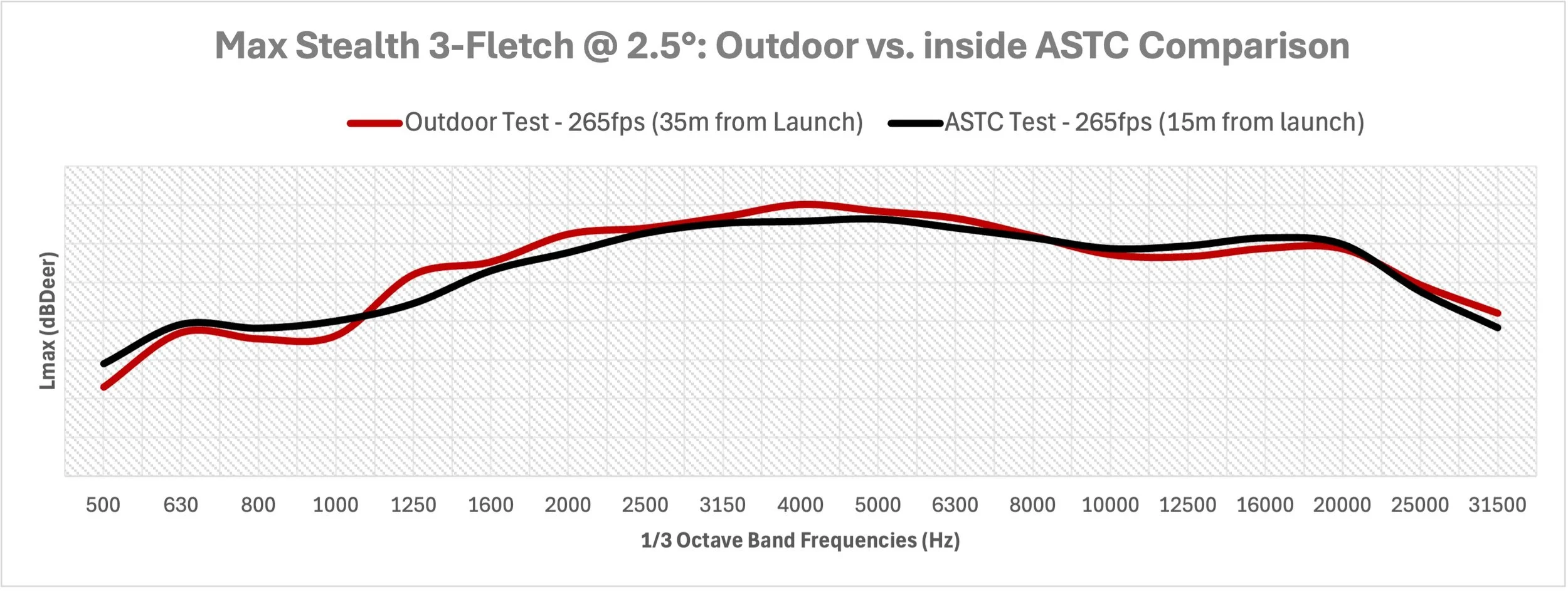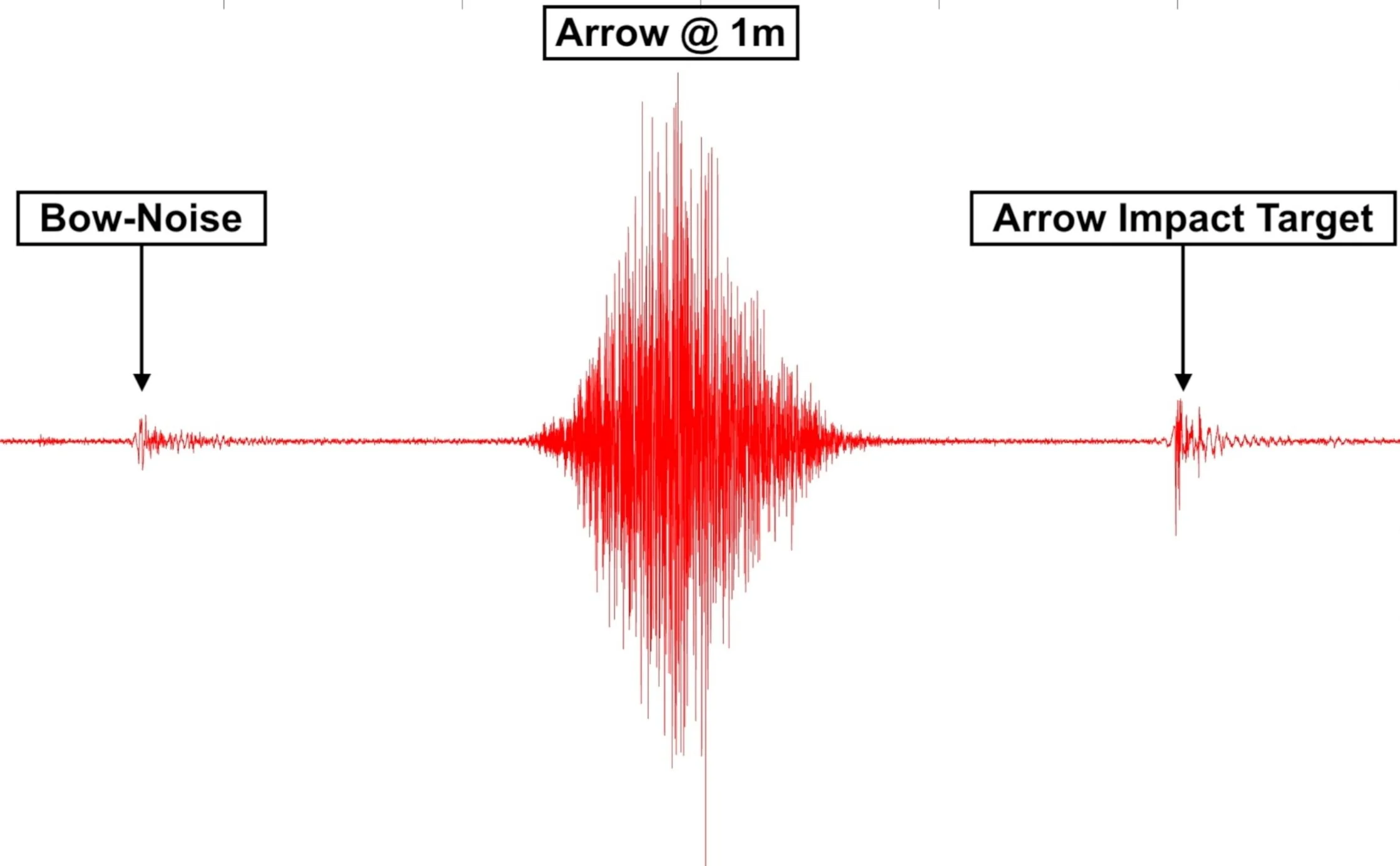Arrow Sound Testing Methodology
To accurately measure the noise associated with an arrow in flight, the Archery Sound Lab has designed and constructed a shoot-through facility—the Arrow Sound Testing Chamber (ASTC), built into an existing timber shed. The ASTC isolates measurements from environmental noise such as wind, animals, traffic, and aircraft, as well as sound generated by the bow at launch and the arrow's impact with the target.
Inside of the ASTC, the Class 1 measurement microphone is mounted to a fixed-base in the centre of the chamber, which ensures repeatable-positioning and even room-mode distribution. The walls are lined with 250mm thick absorptive material to ensure no internal acoustic reflections (>250Hz) interfere with the measurement.
Due to the apertures required for the arrow to pass through the ASTC, there are limits to the achievable isolation. The average noise floor has been measured at 22.3 dB(Z) across the frequency range from 500 Hz to 31,500 Hz. Internally, the ASTC has been acoustically validated to provide free-field conditions down to 250 Hz, in accordance with ISO 26101:2017. The average reverberation time is 0.03 s across the 1/3-octave bands from 500 Hz to 8kHz (RT60, T20), as specified in ISO 3382-1.
Background noise levels inside the ASTC (L(z)eq).
To ensure the arrow passes the measurement microphone at a consistent distance of 1 meter, stringlines forming a 50 mm-wide window are used. Contact with the stringlines is visually detectable, and the shot is repeated until the arrow passes cleanly without contact. This ensures the arrow travels between 975 mm and 1025 mm from the microphone, resulting in a theoretical sound level variation of ±0.2 dB, based on the inverse-square law.
An invalid measurement due to contact with the stringline. This provides control over the arrows distance from the microphone (1000mm ±25mm)
To confirm that the chamber itself does not influence arrow fly-by measurements, a control configuration was tested both outdoors (on a low-noise day) and inside the ASTC. After accounting for ground reflections in the outdoor data, the results showed strong agreement within ±0.5 dB.
The same arrow was shot 10 times and measured for its average Lmax (dBeer) both outdoors and inside the ASTC.
Equipment
Arrow fly-by recordings are captured using an Earthworks M30 Measurement Microphone (Class 1) with a frequency response of 3Hz - 30,000Hz, connected to a Babyface Pro FS audio interface, and controlled via the Audio and Acoustical Response Analysis Environment (AARAE) within MATLAB. The system was calibrated using a ¼″ microphone calibrator (94 dB @ 1 kHz) to ensure repeatable results. Arrow velocities were measured using a Garmin C1 Pro Chronograph.
Garmin Xero C1 Chronograph
Arrow Testing Procedure
All arrows are shot multiple times using the default bow (Elite Ritual 35) set at 62lbs and 28.5” draw-length. To obtain data at different arrow velocities, either the total arrow weight is adjusted, or a different bow is utilised, depending on the requirements. Each bow is carefully tuned to shoot a perfect bullet hole through paper using a fletched and a bare shaft arrow, with any tuning issues addressed onsite using a bow-press and draw-board.
Audio Processing Steps
Calibrate the input level using the ¼″ microphone calibrator.
Trim the audio recording to 0.2 seconds to exclude bow noise and target impact.
Apply a Tukey window (tapered cosine) with a ratio of 0.2 to smoothly fade in and out the waveform.
Listen to each recording and omit any with audible background noise (e.g., dog bark, bird call).
Apply a 1/3-octave band FFT, using filter slopes that meet IEC Class 0 specifications.
Calculate L(Z)max values with Fast (125 ms) time weighting, from 500 Hz to 31,500 Hz.
For each arrow configuration, logarithmically average all valid shots in each 1/3-octave band.
Apply Deer-Weighting: Each band is adjusted using offsets derived from the auditory threshold of white-tailed deer (Heffner, 2010), to reflect the perceived “loudness” from a deer’s perspective. This weighting accounts for their hearing being centred approximately one octave higher than that of humans.
Sum the weighted bands logarithmically to yield a single-number value representing the perceived loudness (Lmax dB-Deer) for each arrow configuration.
Using AARAE within Matlab, the recordings are trimmed to include the fletching-noise only, then processed to identify Lmax in 1/3 octave-bands, or any other acoustical metric that is of interest (Lpeak, Leq, L5 etc)




